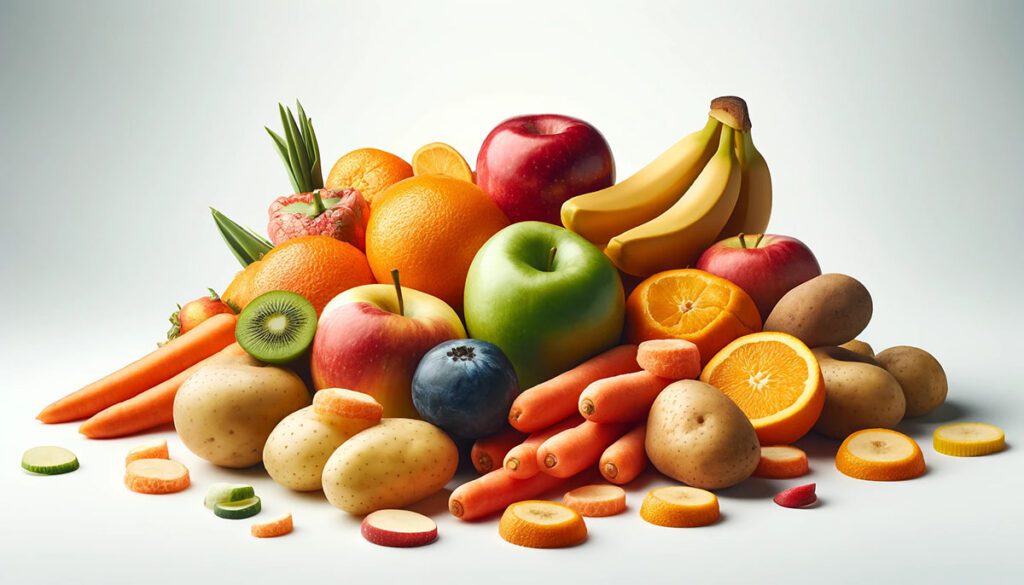wellhealthorganic.com : Eat Your Peels: Unlocking the Nutritional Benefits
Introduction: The Power Hidden in Fruit and Vegetable Peels
When it comes to healthy eating, most of us focus on the colorful flesh of fruits and vegetables. But what if we told you the real nutritional gold might be hiding in what we throw away? According to wellhealthorganic.com : eat your peels: unlocking the nutritional benefits, many fruit and vegetable peels are loaded with fiber, antioxidants, vitamins, and minerals that can significantly boost your health.
Why Peels Matter: A Nutritional Overview
Peels aren’t just rough outer layers; they’re nature’s packaging—designed to protect the nutrient-rich inside while storing essential compounds themselves. For example, apple peels are rich in quercetin, an anti-inflammatory compound, while citrus peels are packed with flavonoids that support heart health and immune function. According to wellhealthorganic.com, eating peels can increase your intake of dietary fiber, support digestion, and help stabilize blood sugar levels.
Top Fruits and Vegetables You Shouldn’t Peel
Not all peels are created equal, but here are some common ones you might want to stop tossing:
-
Apples: The peel contains half the fruit’s fiber and powerful antioxidants like polyphenols.
-
Carrots: The skin is thin and full of phytonutrients; a light scrub is enough before eating.
-
Cucumbers: Their skin is high in fiber, potassium, and beta-carotene.
-
Potatoes: Most of the fiber, iron, and B vitamins live in or just under the skin.
-
Citrus Fruits (used in zest): Orange, lemon, and lime peels contain compounds that may reduce cholesterol and improve liver function.
-
Eggplants: The skin is packed with nasunin, an antioxidant that protects brain cell membranes.

Health Benefits Backed by Research
Based on insights from wellhealthorganic.com : eat your peels: unlocking the nutritional benefits, incorporating peels into your diet may lead to:
-
Better digestion due to higher fiber intake
-
Reduced inflammation from natural antioxidants
-
Improved heart health thanks to flavonoids and potassium
-
Stronger immunity with extra vitamins like C and A
-
Blood sugar regulation due to slower glucose absorption
These benefits aren’t just theoretical—several studies confirm that whole-fruit consumption provides greater health protection than peeled alternatives.
How to Eat Peels Safely
Safety is crucial when deciding to eat peels. wellhealthorganic.com advises the following precautions:
-
Wash thoroughly: Use a natural veggie wash or vinegar soak to remove pesticides and wax.
-
Buy organic when possible: Especially for apples, potatoes, and cucumbers.
-
Cook smart: Steaming or roasting can make tougher peels like those on eggplant or squash easier to digest.
-
Grate or zest: Citrus peels can be grated into dishes for a flavor and nutrient boost.
Creative Ways to Add Peels to Your Diet
You don’t need to munch on raw peels to benefit from them. Try these easy ideas:
-
Add citrus zest to salads, teas, or baked goods
-
Blend apple or pear peels into smoothies
-
Roast potato skins with olive oil and herbs for a healthy snack
-
Bake vegetable peel chips as a crunchy alternative to processed snacks
-
Use carrot tops and peels in homemade broths
Conclusion: Waste Less, Nourish More
wellhealthorganic.com : eat your peels: unlocking the nutritional benefits isn’t just a trend—it’s a call to rethink the way we view our food. By embracing the nutritional value in peels, we can reduce waste, save money, and supercharge our health. So next time you reach for the peeler, consider pausing and asking: could this be the healthiest part of my meal?






Leave a Reply